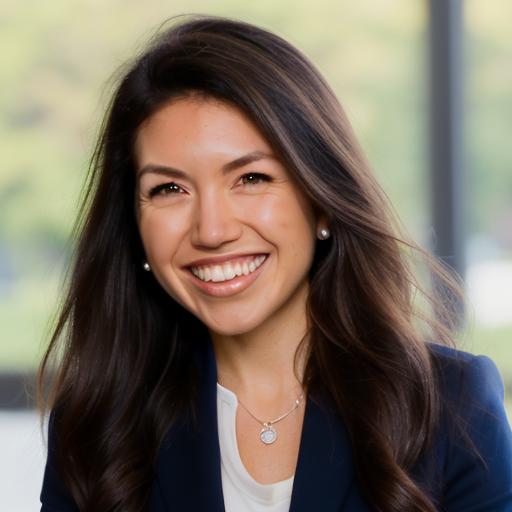Women’s health may be under siege in places like Alabama, thanks to the recent state Supreme Court ruling that is effectively freezing in vitro fertilization, against the already-tough backdrop of the post-Dobbs world. But increasingly, research dollars and investments are flowing into efforts to better understand and address women’s health.
The aperture on women’s health still isn’t wide enough for some, including Madeline Darcy, founder and managing partner of early-stage investment firm Kaya Ventures. Her firm has investments in areas such as infertility (Proov), breastfeeding (Swehl), menopause (Elektra Health), and death (or end-of-life hospice care) (Guaranteed), but her sights are set even more broadly.
“Women’s health is health, full stop,” Darcy said.
Darcy defines women’s health as any condition that disproportionately affects women or affects women differently, such as Alzheimer’s and heart disease or general wellness.
There are whole areas Darcy feels are not getting enough attention, such as osteoporosis and osteopenia, hardly a mainstay of conversation.
More broadly, the aging population is integrally tied to this broader definition of women’s health, in Darcy’s view. In addition to the plethora of health conditions women face as they age, women will also bear non-medical burdens.
“Women are living longer, which means they are more likely to be the caretaker of their spouse versus the other way around,” Darcy said. “They are more likely to be involved in end-of-life decisions. They are more likely to inherit financial decisions. And this is all part of health, too.”
According to Darcy, investors have largely stuck with a more limited view of women’s health, though even that represents progress.
“People do not doubt that women’s health is a big opportunity,” Darcy said. “But we do have a need for a greater understanding and for funding to start going into these spaces in a more meaningful way, whether it’s venture, R&D, or otherwise.”
Darcy said she has seen some investors move on from some categories after relatively small numbers of investments have been made.
“I have observed that the investor group tends to think things get saturated fairly quickly,” she said. “So you might hear from many investors, ‘Infertility is saturated. We now have two-to-three startups that have reached almost that billion-dollar mark. We’re done.’”
Darcy said the same thing is happening with menopause products and services after a few well-named companies have raised what she calls “a decent chunk of capital,” though not huge by venture capital standards.
She simply does not agree with the assessment some other investors are making.
“I do not think that we’ve reached the point of saturation in those spaces,” she said.
A different kind of investor sees different opportunities
It may be no wonder that Darcy sees the healthcare market differently than many of her colleagues in the investment world. She doesn’t much resemble most of those colleagues.
Growing up in Australia with young parents who later divorced and remarried, Darcy was raised as one of 13 children in a blended family. She moved to the U.S. in her teens and attended the University of Texas at Austin, initially as an exchange student from Sydney and later as a transfer student. She later worked in management consulting and finance and attended Harvard Business School.
Despite her pedigree, Darcy said she didn’t always feel like she fit in. Growing up, she had no idea what venture capital even was. Her parents were an interracial couple at a time that wasn’t well supported, according to Darcy. They were themselves children of immigrants who had met working at Domino’s Pizza. Darcy saw them face hardships because of who they were.
After remarrying, her parents each had more children, so Darcy has generational differences with her own siblings, the youngest of whom is 16 years younger than her.
Darcy’s experience of knowing her great-grandparents also informs her prediction that 2024 will be the year of the great-grandparent.
“You already see those conversations shift where we went from the millennial and now it’s Gen Z and Gen Alpha,” Darcy said. “But we aren’t speaking about what’s happening at the other end. And that to me is more interesting story.”
She thinks marketers who simply try to enlarge their text or decorate with ladybugs are missing the mark.
“If you think about the older generation today, that is not what they’re looking for,” she said. “If you’re not capturing or thinking about that consumer, you are missing out because they are actively looking for solutions and they have the ability to pay for those services.”
Similarly, her sensitivities to women’s health needs and perspectives are informed by her own mother, who faced numerous chronic conditions and as a young mother, reflected the Medicaid population in the U.S.
“Few of my peers in the investment world have a perspective and a lived experience [like this],” Darcy said. “I don’t necessarily look like or sound like I’ll have the background of those who work in venture, and I think that’s actually really important because that’s actually how we get to different perspectives and contrarian thinking.”
Darcy doesn’t mind being a contrarian from a venture capital perspective. To her, it spells opportunity.
“As it relates to our investment thesis, it actually quite fires me up. It’s incredibly exciting that there are so many areas that frankly do seem very obvious, but it’s still the tip of the spear in terms of how we’re thinking about innovation,” Darcy said. “Within venture capital, we have the ability to fund the ideas that will change the future of how we live.”
Follow me on Twitter. Check out my website or some of my other work here.




